I’m not used to having that much fun and losing.
The 12 Hundo in Hondo Team Endurance Challenge match this year was the inaugural event in a new series hosted by Kiote Rifles and some world class sponsors. It featured some challenging stages that highlighted skills well beyond just shooting ability.
My team did not score well. Since we didn’t do well, you’d think I’d have been dejected. I wasn’t, and my team mate wasn’t either. We were ready to sign up for next year’s match before we left. In fact, it was so popular that most of the competitors I spoke with were willing to pony up for next year’s match right then and there.
It was as much fun as it was for a few reasons. The people were great, staff and competitors alike. Multiple aspects of the event were challenging. Above all, it was a valid test of a wide range of skills that are actually applicable to hunting and tactical engagements.
I wasn’t surprised one bit that the mood among the competitors was cooperative and helpful. Time after time, teams helped out other teams with gear, ammunition, and techniques. For example, one team showed up with the wrong ammunition. As has happened to many of us, the competitor simply grabbed the wrong ammo box and headed out, not realizing it. Another competitor went to his truck, found suitable ammunition, and gave the other team everything they needed to re-zero with the new ammo and compete, no charge.
I was shooting a scope I was unfamiliar with and was concerned that the glass clarity wasn’t up to par with other similar models of Nightforce scopes I had used. It wasn’t cloudy glass, it was dirty glass. One of the competitors took out his cleaning kit and set to cleaning my scope for me.
One of the teams were straight-up professional shooters. Nico Detour who shoots for XLR, Benchmark Barrels, US Optics and ZRODelta and Josh Reeves shoots for Leupold. They teamed up to shoot and helped RO the event as well. They also graciously offered impromptu seminars for all of the other competitors upon request. Nico showed me the value in Cole-Tac’s tripod leggings, and how to use them to get a much more stable position.
That’s the attitude I’ve seen at most competitions. Even though there were serious prizes on the line, competitors helped each other out with a smile, cheered for each other, and got along great. A good time was had by all.
The accommodations were all first rate. The facilities included shuffleboard, games, trap and skeet, and great food. Steak dinners every night under the pavilion with top shooters was a great opportunity to learn and make new friends.
As soon as the shooting of the day was over, lots of were back trying our hand again on some the stages that were particularly troubling, troubleshooting techniques and showing each other new ways to use old gear. I’m sure I wasn’t the only one who learned from some of those other shooters.
The 12 Hundo in Hondo wasn’t run like a PRS event, or a 3-gun event, or any kind of NRA or CMP event I’ve ever seen. It was shooting from positions you’ll find in the real world, in teams, and on the clock, from unknown distances at targets you had to spot.
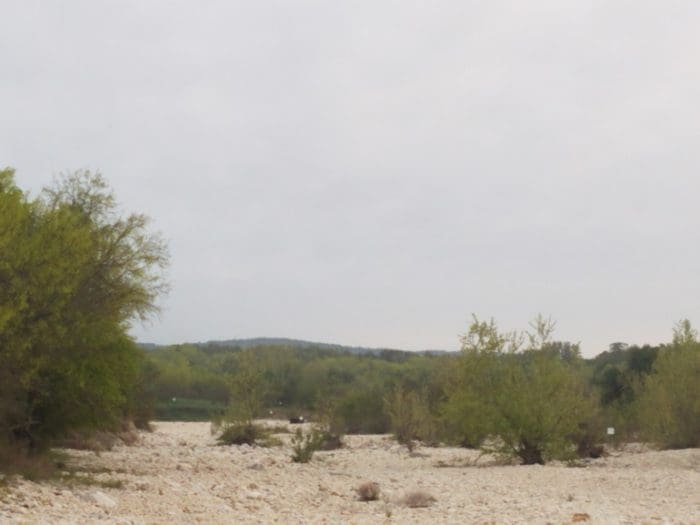
The rules were pretty simple and the course of fire for each stage was the same. There were five 12-inch targets spread out over an area, between 100 and 1,200 yards. The AR targets were never more than 600 yards away.
You were given the known distance for the middle target, but you didn’t know the distance or the location of any other target. The known distance target was the closest target for the bolt gun and the farthest target for the AR.
Each target had to be struck twice, so six shots would be taken by each shooter, for a total of 12 shots. Each target was worth the same amount of points. Targets hit would earn you points, targets left un-hit would subtract an equal amount of points. That means if you hit exactly half of the targets within the allotted time, your team would have a score of zero.
No electronic rangefinders of any kind were allowed to be used. The target ranges and stage layouts weren’t revealed at any time. The target size was only released the day of the match. All ranging had to be done through the scope.
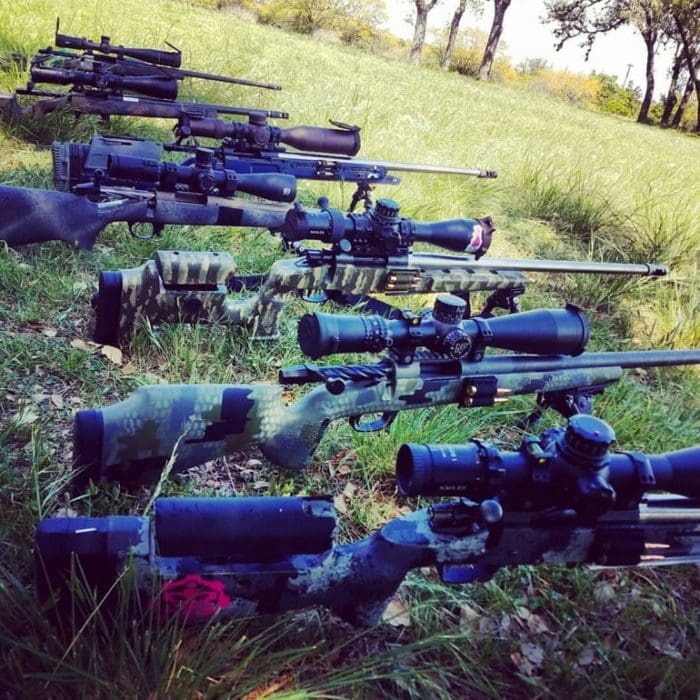
You were allowed to use any bolt action rifle with the maximum chambering of .300 WinMag. For the bolt guns, short actions in 6mm and 6.5mm absolutely dominated the competition. Only one poor schmuck was using a .308 Win, and that was me. The comparative limitations of the slower, thicker round with higher recoil were readily apparent in several of the stages.
For the semi-autos, the rules limited them to the AR-15 platform. Any caliber in that platform was acceptable. Many shooters, including some the high scorers, chose the 5.56 NATO with a 75 or 77 grain round. There were quite a few folks shooting the 224 Valkrie, 224 Nosler, and 224 Grendel.
Those chamberings had significant advantages, as they required little to no windage adjustment. The drop on those calibers was so little that for some of the stages, competitors with a smart zero simply held from the bottom to just off the top of the plate for all six shots, no adjustments on the scope were required.
As far as gear, other than a rangefinder, you could take anything you wanted, but you had to carry it for the entire course. A quality tripod was an absolute must. One per shooter would very much be recommended. So would at least one large bag per shooter to place on branches, rails, and other barriers to shoot from.
Some teams carried three tripods, binoculars plus spotting scopes, extra optics, multiple bags, weather meters…everything but the kitchen sink. Some went just with guns, ammo, and a single tripod. In the end, the top shooting teams all had at least the tripods and bags in common.
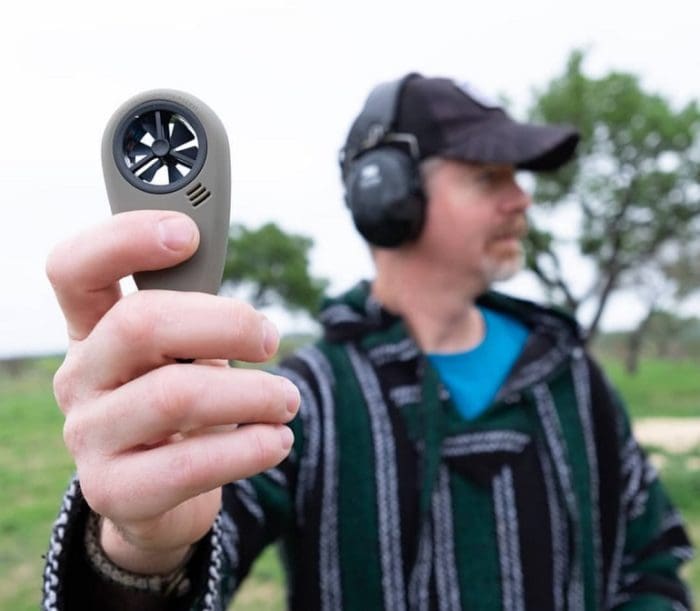
My plan was to have one of my friends who is an avid shooter and hunter shoot the bolt gun, and I would shoot an AR-15 chambered in 6.5 Grendel. We shoot and hunt together often. I worked up a great round for the rifle and spent a good amount of time shooting and hunting with it earlier in the year.
Unfortunately, sometimes plans change. My partner had to bow out at the last minute so 24 hours before the match I changed partners, switched from shooting the AR to the bolt gun, and changed optics (including going from mils to MOA).
My new partner and I had never shot together. On the drive down there, he asked me how to use the reticle to range targets. He downloaded Ryan Cleckner’s Long Range Shooting Handbook and learned as much as he could. To his credit, the former Marine, who had never used a reticle to range anything in his life, shot just as well as I did and many of the other competitors with lots more experience. He’s a heck of a shooter.
That said, in no uncertain terms, we got whooped. We didn’t finish last, but we were standing right next to the folks who did. I learned a lot of lessons, the first of which was what really separated the enthusiastic (us) from the top scorers (not us.) Communication and a plan. Note I didn’t say shooting ability.
I didn’t say shooting ability because everyone there, including us, were passable shooters. Being a great shot from the prone or from the bench wouldn’t help you much on this course. I don’t think a single stage was doable entirely from the prone. You were always shooting from improvised positions off of natural vegetation, rocks, farm equipment, or in the case of the stage I RO’d for, a collapsed bridge.
I started focusing on that kind of shooting last year and it certainly paid off. I only missed four shots during the entire course and I was pretty sure I was going to miss them when I pulled the trigger. My partner missed very few as well. Our team’s problem was time.
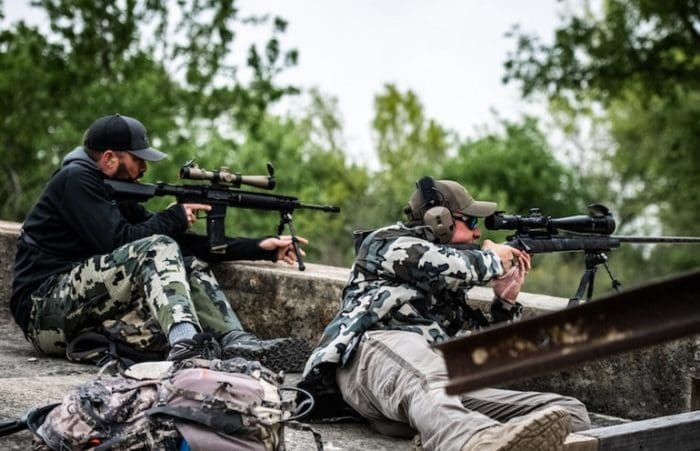
For each stage you had four minutes total. As soon as the Range Officer explained the stage and you said you understood, the clock started. You had four minutes total to find five targets, range them, and shoot them.
There were three targets per shooter on each stage and they all had to be hit twice (the center target was shot by both shooters). So 12 total shots in four minutes. For every 30 seconds you had left over, you gained additional points, but only if you hit every target.
We never had any time left over. In fact, we ran out of time every single stage. The RO allowed me to take the shots anyway just to see if I could, but I was out of time before I began shooting on many stages. All of those targets that remained un-hit after time was called were deducted from our points. In the end, we were barely in the positive numbers.
Since we hadn’t coordinated at all, we operated in the least efficient way possible. Really, I could go on and on about what we got wrong, but in the end it was just that we didn’t think about how we would shoot together, or how any of the set-up would work. We were just figuring it out along the way, and that ate up more time than we had.
Since we got to RO the next day, we saw how the successful teams got it done. They helped each other set up gear and they knew each others gear. They talked to each other before and during the shooting. They ranged for each other and had each others’ pre-made range cards, so they could just call adjustments and corrections for each other.
They were highly flexible on the order of shooting, sometimes swapping back and forth during the course of fire. Some of the teams even ran the exact same scope on both guns with the same reticle. Most, but not all had practiced together before the match.
The winning team was a couple of buddies who shot together often, and had obviously practiced for this match quite a bit. When other teams were struggling to make time, these guys were cleaning stages in a minute flat. They finished far ahead of the pack.
That was the number one determining factor in how well people did. You had to know how to range, you had to know how to shoot. But it was teamwork that determined the top slots.
My partner and I shot the first day, scored, and then served as Range Officers (ROs) for the rest of the competition.
The course included a total of about a 7-mile walk. As long as you kept a decent walking pace, there was no reason you couldn’t finish the course in the maximum allowable time. No one was disqualified for time. Even so, some folks chose to run it anyway. I assume there just isn’t enough misery in their lives so they must artificially create it. Must be nice.
Seven miles isn’t too terribly hard, but if your gear was particularly heavy and cumbersome, it got uncomfortable. One competitor, a team scoring near the top, did the whole competition in blue jeans and cowboy boots. Another shooter showed up completely decked out in tactical gear, all the way down to a plate carrier, large fixed blade knife, secondary duty pistol, battle belt with extra magazines for his AR and his pistol…and even a helmet with a mounted Go Pro camera.
Tactical Timmy was getting a lot of sideways glances, right until he started shooting. Without a doubt, the young man was a very competent marksman. Why did he have all that unnecessary stuff on? For the same reason the other dude ran the course in cowboy boots. That’s what he was used to.
He had never done a competition like this one. He was used to doing more athletic tactical-style matches that required that kind of gear to compete. Instead of changing what he knew, he stuck to performing how he had practiced, and it paid off for him and his partner. They scored very well.
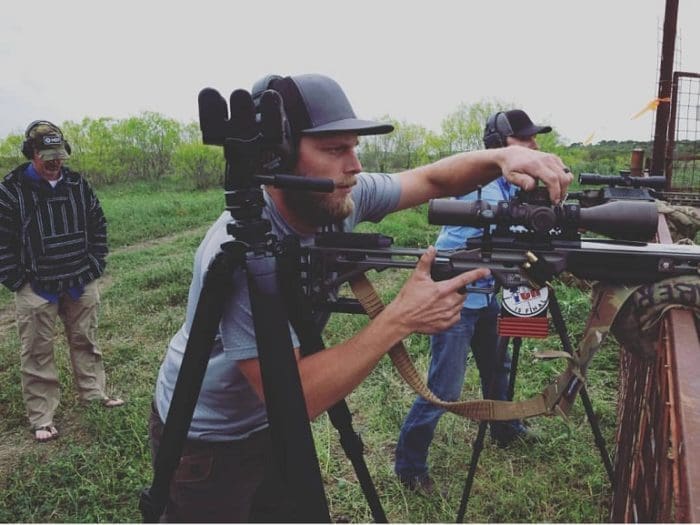
I’m pretty sure every competitor would agree that the first stage was the hardest, though it didn’t look that way. The targets were laid out across a plowed field, in ranges of 280 to 800 yards. A stock fence was surrounding the field, and you had to shoot off the gate of the fence.
You could use a bag on the gate, you could use a tripod to hold the back of the rifle. It didn’t look that hard. We did not hit a single target, even the known distance plate. That was blow to the ol’ morale, and we walked out of that stage wondering what we had gotten ourselves into. At the end of the day we found out, every other team, including the pros, zeroed that stage as well.
The problem wasn’t the position, it was the mirage. It almost rained every chilly night. Then, in true south Texas fashion, it turned to hot and humid during the day. Across that dark plowed dirt, the moisture in the air boiled and roiled.
Even at the closest range, the target didn’t appear like the 12″ white plate it was. Instead, we all were looking at some kind of wavy blob somewhere out there in the distance. The far targets appeared to literally float around the field, their actual location a complete mystery.
In any kind of hunting or tactical situation, no responsible shooter would have even taken those shots. But in this competition, shots not taken are the same as shots missed. The result was a kick in the pants to everyone who shot it.
Actually the first two stages were deceptively difficult. On the second stage, shooters had to shoot off a low cement stock tank. It looked easy, but it was one of those things where the tank was too low to sit and too high to lay down, and again…that mirage. But by the third stage — the one I RO’d — folks were getting the hang of it.
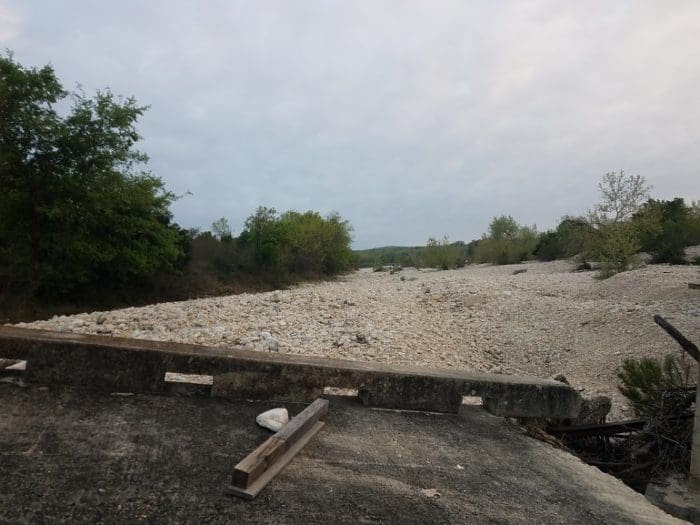
Stage 3 was actually pretty simple, assuming you didn’t overthink it. It was a collapsed bridge with targets from 200 to 800 yards. It was a little tricky as it required the bolt gunner to slightly change positions to hit all of the targets, or be willing to risk shooting through some sparse vegetation.
The real challenge of that stage was that it appeared that getting up to a higher position on the bridge would make for an easier shot. In reality, that position was impossible, and some competitors ate up time trying to figure out how to get up there, only to realize their mistake once they did. The lesson there was simple: if you can see your target, shoot your target.
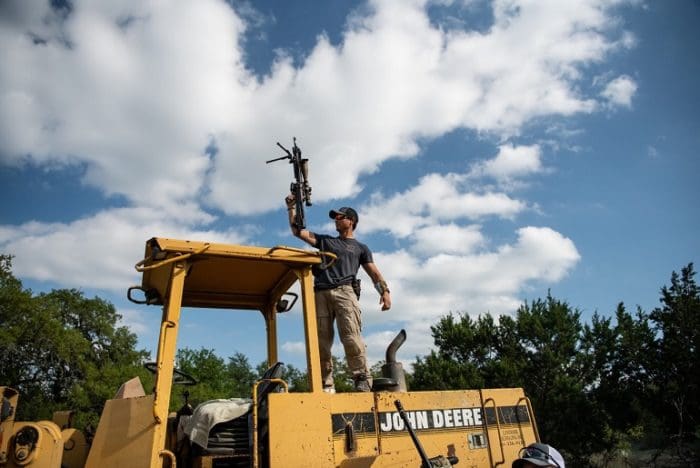
The remaining seven stages were all a mix of shooting, problem-solving, and teamwork. Every shot was doable (except maybe the first one because of the mirage) but very few shots were easy. No team hit every single target, no one shot a perfect score.
The stages varied widely. One was shooting off a front-end loader, where the key was one team member shooting off the bucket and another team member shooting from the roof. Another was using a “drop gun” off a tripod shooting down a ravine. Yet another required you to shoot standing off a cedar tree, threading the needle through vegetation. Another required you shoot from a hunting blind, but at a significant downward angle, and you had to find the targets in the brush.
Finding the targets wasn’t usually a problem, but for a few of the stages it was a challenge. Almost every time that happened, it was actually the closest target people missed. The one that gave some teams fits wasn’t even 200 yards away and in the open. It was just by that stage in the match everyone was looking farther out, and blew right by it in their scan.
There were two stages that were essentially bonus stages. The first was a Know Your Limits stage. For this one, the range was given, but the targets were lined up next to each other, in descending size. You had to take two shots at the first target. If you missed, points would not be deducted.
If you hit, you could walk away with your points and be done, or you could shoot the next smallest for more points. However, if you missed, all your points would be deducted.
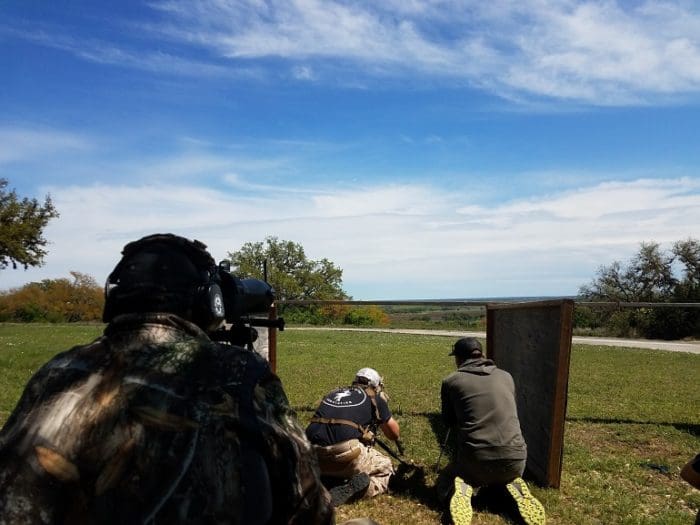
The final bonus stage, for anyone who wanted to take it, was shooting a 30 target” circle at one mile. There was a time limit but the real tricky part was that you couldn’t shoot from the prone. Any other position was fine. Competitor Jed Knowlton was the only shooter to hit the mile target, shooting a rifle chambered in 6.5 PRC with factory Hornady ammunition.
The prize table for the Hundo in Hondo was no joke. The event was sponsored by MDT, J Allen Enterprises, Nightforce, US Optics, Peak Case Company, Cole-Tac, Hawkins Precision, Texas Custom Gunworks, HopticUSA, Manners Stocks, ZRODelta and Hornady. There was something for everyone, literally. Even our team, scoring as far back in the pack as we did, walked away with something.
In my case, it was three boxes or Hornady ELD and ELD-X 6.5mm bullets and a small Cole-Tac bag. Prizes included the choice of any scope in the US Optics line, Leupold scopes, entire chassis, complete gunsmithing services, bags from Cole-Tac, custom cases, you name it.
The 12 Hundo In Hondo turned out to be a big success. Because of the positive feedback among the competitors, the event has served as the jump point for three more similar events next year, called the Team Endurance Challenge matches. I plan to shoot all three.

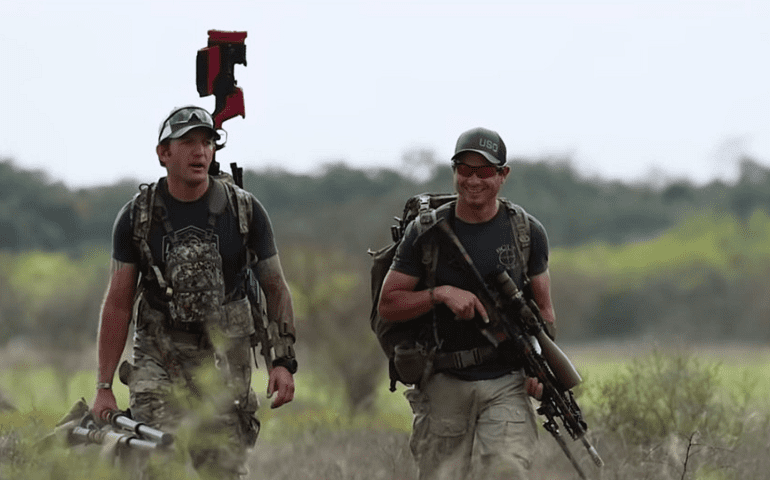



The consistency of the camaraderie reported by others for the lesser skilled competitors like me continues to draw me to the sport.
We don’t allow attitudes or egos like PRS does. Teams with bad attitudes or ego problems are quickly and quietly asked to leave, immediately. Moreover, the average everyday shooter tends to do better at these matches because there is no pre-gaming allowed for stages. Anyone and everyone is always welcomed at our matches — unless you act like an ass as mentioned above.
I’ve never been involved in long range shooting but it seems like something I’d be interested in getting into in a few years if I can find the time. That said, a couple friends who used to shoot long range competitions talked constantly about terrible attitudes being the norm and how that more than anything else killed their interest
Is attitude problems a common issue in the “community”?
Were you required to shoot off the things you found or could “make” your own? Like shooting off the frame of your pack?
There was one stage where you had to shoot off a tripod, other than that, you were given left, right, and forward boundaries and were allowed to shoot however you wanted within them. Lots of folks used their backpacks, but for most stages you needed to get higher than seated or a low kneel.
That’s a pretty neat facet of the match. Too bad Wix took down their website.
You’re right this is a far more “pure shooting” match than the Fink which is way more “all over the place”.
We changed the website to reflect the new series name. You can find it here: http://www.TECseries.org
jtw, that sounds like one hell of a match. Way to old and tired to take on something like that today. Besides, when I shot competitively it was practical handgun and rifle. Rifle was 300 yards tops. Open sights, of course. Interesting to read about though. Never shot a match that I didn’t learn something. Doesn’t suprise me that communication was at least as important as skill with your weapon.
Jon, if you need a shooting partner, I’d love to take another trip to Texas.
I’m not the shooter I used to be, but I’m still pretty good.
Doing some long range work today.
Hey Tom, is it you that runs the K2 3500 pack? I’ve been thinking of swapping out my 2000 for a 3500 before they stop making the K2 series and I have to get a new frame.
Thoughts?
Thanks Tom, you’d certainly be an asset. My partner is still smarting from the whoopin’ we took and is determined to shoot better in the next match.
More! Very interesting article. Would love to see more. How many TTAG-ers/Staff competed?
FYI if your team volunteer’s to RO on Saturday and Sunday (after you shoot on a Friday morning) you get a highly discounted entry fee + still eligible for the prize table.
Count Joe and I in for that!
I know some readers were there but I was the only writer.
That Tactical Timmy was me. Never expected to show up in a TTAG article.
It was a great match!
I had the camera since I put up videos on YouTube and Instagram.
It was great to meet you. As you can tell from the article, your fine shooting was noticed.
Thank you sir!
Hope to see y’all at a Run and Gun some day.
texasrunandgun.com
Awesome writeup. Nothing is better than a competition where all involved help each other try to do their best.
Where can I get me some of them tactical flip-flops?
Asking for a friend before the possum buys them all up.
http://www.combatflipflops.com
Founded and run by a veteran Army Ranger. Great dude, even if he is an officer. #badforrunning #worseforfighting
That’s hilarious. Wanna bet they were not expecting a serious tactical flip flop reply? Also, pretty sure that prior officer got lost, ended up at a beach, then just ran with that first thought that came to his head and now we have actual tactical flip flops. Good job, sir. I’ll remember that when my shower shoes need replaced 😉
Good to see an interesting article like this about a challenging shooting event in my area. It was a fun, well-written read.
2020 will have 3 TECseries matches:
• Texas (in March)
• New Mexico (in May)
• Georgia (probably in July)
More info can be found on http://www.TECseries.org
And registration opens up later this year on EventBrite.com (you can search for TECseries there now and set a reminder for when it opens).
essay代写 034
Comments are closed.